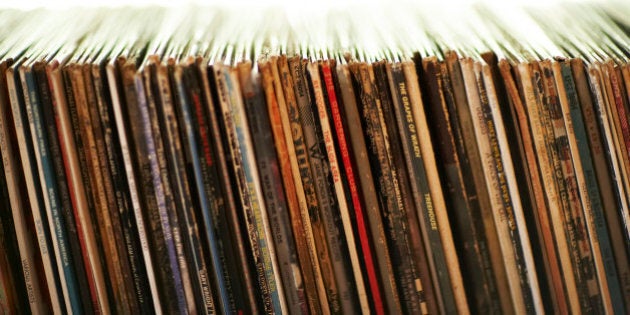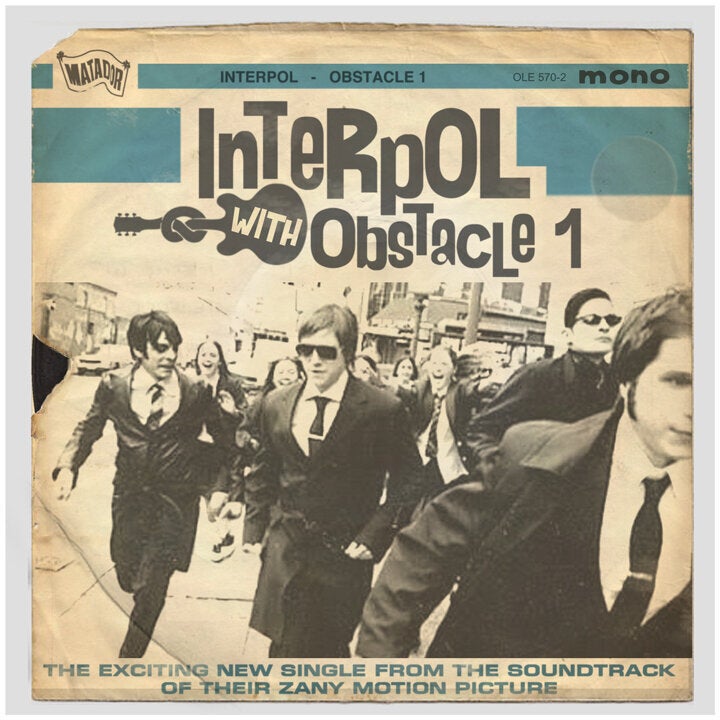
As our access to all music has gotten easier, I've quietly watched people valiantly sticking with the vinyl medium despite record store closures and the unstoppable advancement toward the digital age. While it's commendable saving an aging format in the face of tempting convenience, I can't help but note the difference in how I consumed vinyl and how it's regarded today.
The advent of the liquid digital compact disc afforded record companies a boom period from the mid-80s to the late-90s. Almost overnight the record consumer was sold a bill of falsely inflated goods. Vinyl records costing $7.99 to $10.99 were stocked alongside their supposed audibly superior compact disc counterparts for $17.99 to $24.99.
Catalogue titles went even higher, sometimes at $44.99 a pop. Record company coffers filled to the brim as people scrambled to update their record collections basically swindled into re-buying what they already owned. When the industry introduced the word "remastered" they were able to yoke gullible dimwits a third time. Within six years of its introduction, compact discs rendered vinyl records equal to Betamax tapes and rid them from record store racks.
It was also a boom period in another sense for people like me -- burdened by an insatiable thirst to hear as much music as possible but impeded by budgetary restraints. Since I couldn't afford the hefty $19.99 price tag that the record industry asked per compact disc release, it was most fortuitous that everyone who could afford it decided to unload their vinyl collections onto used record stores at a tenth of the price. That's when I'd swoop in and, for $20, walk out of there with three to four records under my arm. Gradually, as time went on, I was able to amass quite a substantial collection of music for a quarter of the price.
I've always noticed that there were basically two kinds of music consumers: 1) people who bought records because they needed to hear the music and 2) people who bought records because it looked cool, especially next to their chesterfield, buffet or armoire. The first group would take their music grounded up through an AM stereo on tiny 1st generation walkman speakers, anything just to be able to hear the music while the second group wouldn't be caught dead with anything less than a top-of-the-line stereo system.
I've also noticed the amusing inverted correlation between one's record collection and their personal stereo setup. More times than not, the higher quality the stereo system, the slimmer the collection of records/CDs to play. The goal for me has never been to listen to music on the best "googlephonic stereo" with "moon rock needle" but simply to hear as much music as humanly possible before I go deaf.
Buying records was all part of a routine that, for most record collectors, became the most important part of their life after breathing and food. There was usually a specific day of the week or month that you'd hit up certain stores. It was accompanied with the anticipatory trip to said store, increased heartbeat upon entrance, explosive peak when the sought-after items were purchased followed by the afterglow during a post-shopping bite to eat.
I've heard the argument that the vinyl revival is the collective urge to return to the "organic" and to get back to what's "real." Vinyl records are made up of polyvinyl chloride which is the third most used plastic in the world. That doesn't sound too "organic" to me. If that isn't enough, the damn thing gets shrink-wrapped with, you guessed it, more plastic. It's like keeping an unpeeled banana in a ziplock bag.
Ok, I admit it, I still buy vinyl like some relapsing lush (I've bought three records this week already) but my issue with this recent fetishizing of vinyl has more to do with how its treated and viewed than purchased. Vinyl records aren't pieces of furniture to be hung on walls as hipster barometers. Minus the odd collectible exception, vinyl should be scuffed, marked, worn out, scratched and (gasp) SPUN! If you can find a used scratchy copy of "Abbey Road" by The Beatles for $5 bucks, it'll contain more character and charm than your $32 freshly pressed version sold at Urban Outfitters.
And don't feel bad if you haven't bought your cutting edge, ultra-modern record player yet. Unless you're an über-audiophile, what does it matter how the music is heard so long as it's heard? I've been listening to music my whole life, spent many-a-day in top recording studios and I still can't tell the difference between an MP3 file and a vinyl track. Maybe I've already gone deaf or maybe I find audiophile posturing burdensome.
On the bright side, with vinyl collecting taking off again, people are now starting to unload their CD collections and I'm waving them over with stars in my eyes the same way one waves over strippers with $5 bills.
I don't care how you wrap up the music just as long as there's music for me to buy.
MORE ON HUFFPOST:
